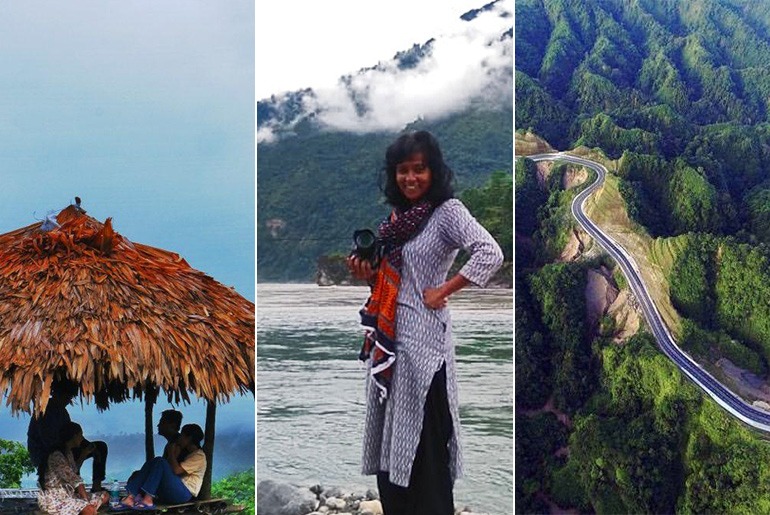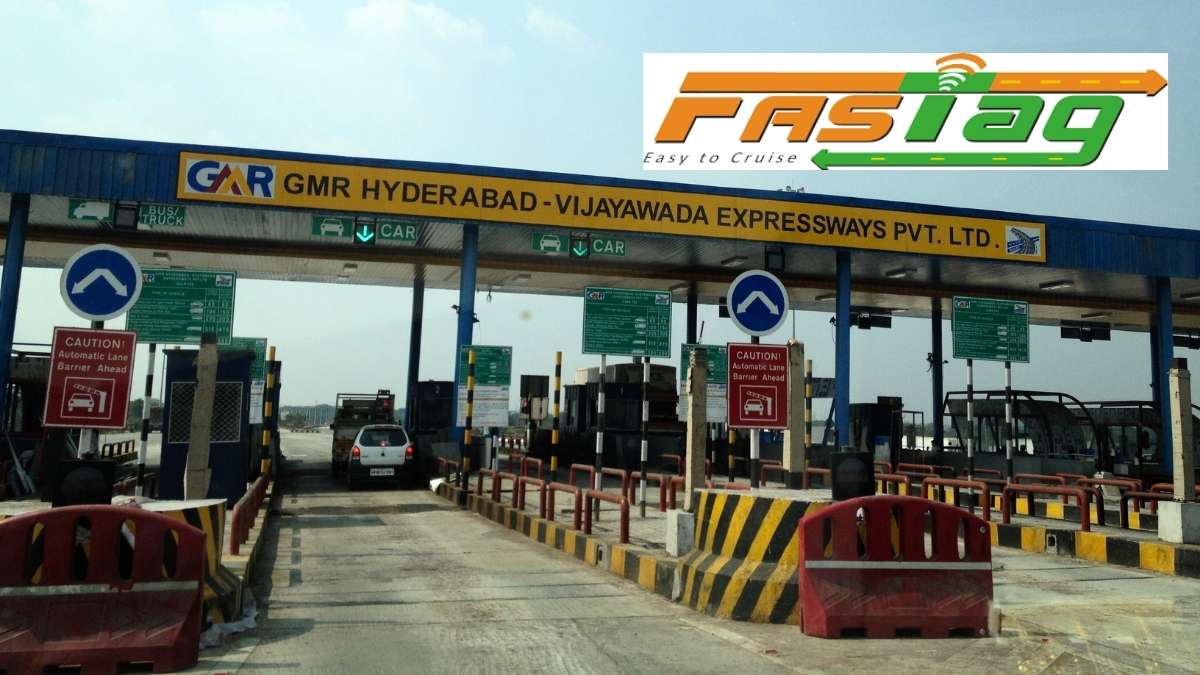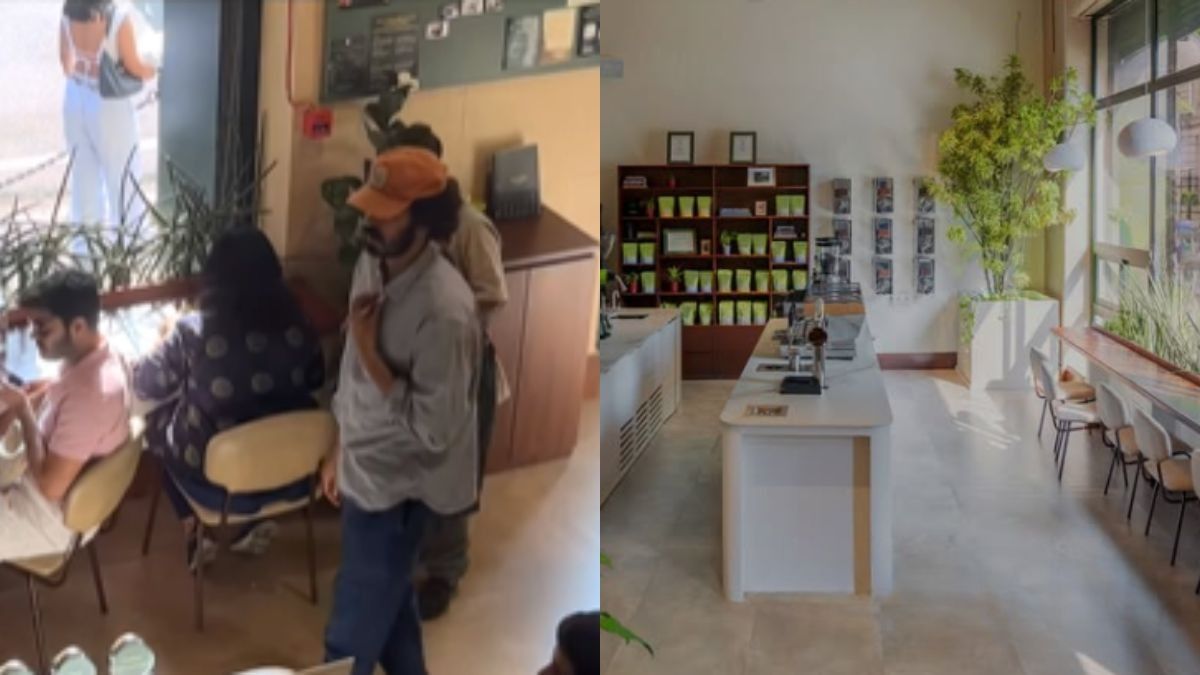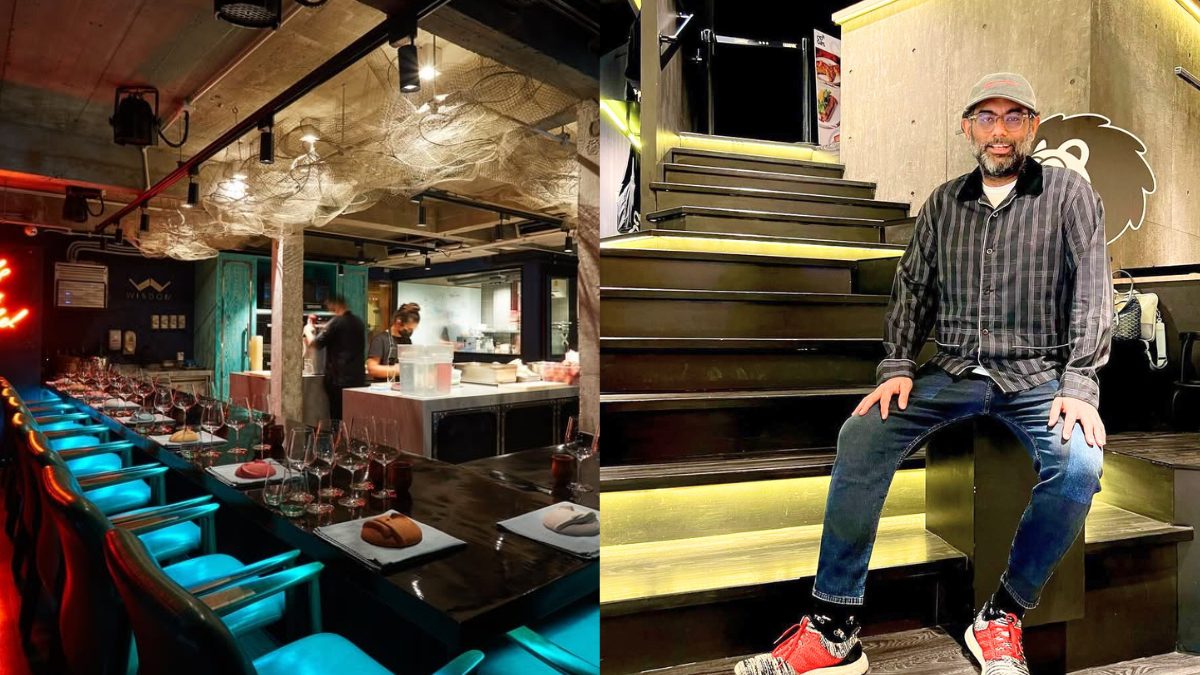I am Neetole Mitra, a free-spirited passionate traveller, who packs off in search of stories. Meeting new people, eating their food, hitching rides and living an offbeat life gets me excited. I am happiest when in nature and doing unrecommended things unsupervised. I write, photograph and make videos. This is the story of my 5 day offbeat trip to Arunachal Pradesh where I lived with tribals.
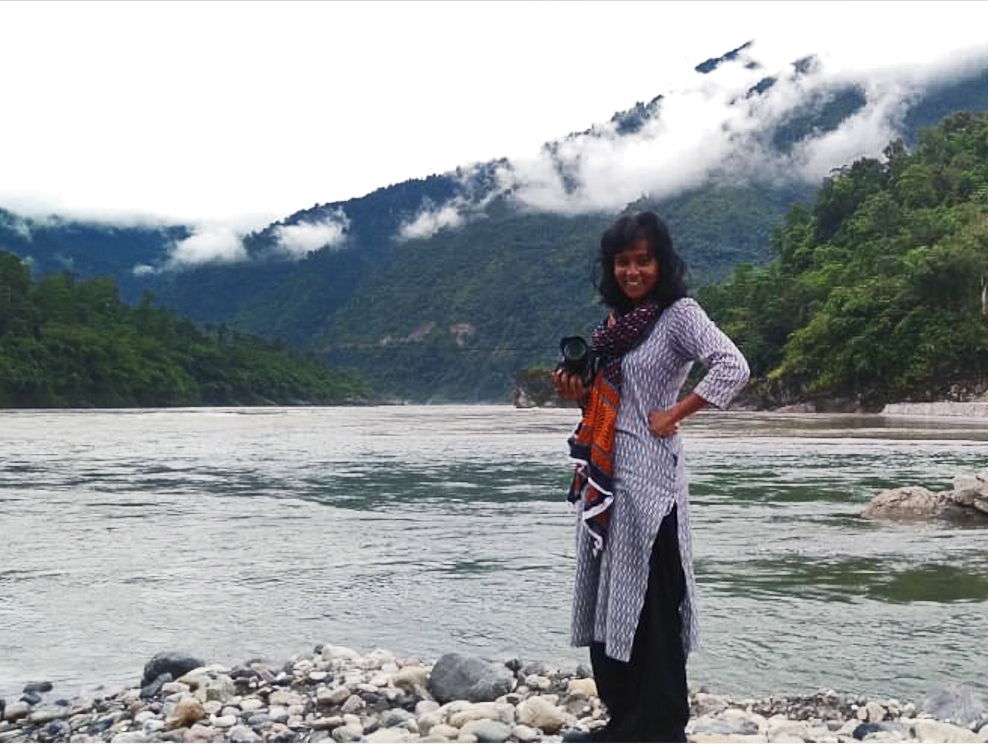
Why Arunachal Pradesh?
I spent a good part of 2019 travelling. By the end of it, shuttling from Delhi to Himachal Pradesh seemed like a mundanity far from the excitement it offered back in 2010 when I first travelled to the state with my friends. After trailing through Jibhi, Prashar, Manali, Leh and Nubra in July and August, I was yearning for something different. I was done with the hostel culture, the endless hash-puffing youth and the milieu of foreign tourists who continued with their golden triangle exploration of India the exotic. With all of these experiences so close at hand, it hardly seemed exotic to me anymore and I wanted to chase an experience that would reconnect me to the good old eye-popping fancy of travelling to new places.
After pouring over google maps for days, I had finally zeroed in on my next destination. This time I and my backpack were going far away to the land of the rising sun – Arunachal Pradesh; India’s least explored state. Interestingly, I encountered the first set of travel hindrance in the comforts of my home, even before I had booked the flight tickets (Cost: 8 to 14k for a round trip depending on how early or late you book). There is a serious dearth of information for those interested in going off the beaten track in the state. Besides a handful of listicles featuring Tawang, Bomdila and Ziro there’s not much else that I found. Oh! There was that one well-meaning guide from the guys at LostwithPurpose.com which read something like this – “infrastructure is poor at best… requires pesky permits… It’s easy to see why it’s the least visited state in the country!”. Woot woot! Just the thing I was looking for.
My Journey Through Arunachal Pradesh
My journey started in Dibrugarh early September. After whiling away a few days by the banks of the calm Brahmaputra, catching up with a few friends who filled me up about the ways of the northeast, and provide some very aromatic tea, I packed away to Arunachal Pradesh breezing past yellow paddy fields, entering the state at Lower Dibang District, halting at Roing (the district headquarter).
Day 1
The first day at Roing is slightly disorienting. The market stretches out around 500 meters over the main highway and through a crisscross of neat alleys surrounding the main highway. The circuit house, past the residential alleys, doesn’t house travellers. I reach out to two homestays. One of them is under construction and the owner of the second is travelling to Itanagar for work. No one at Mishmi Hills camp picks up my call either and I am left with my backpacks staring at a signboard that reads Hotel Mimu.
It’s a basic lodge, looking out at the blue misty hills in the distance and the bus depot across the road. The young boys employed at the lodge pamper me with endless cups (sometimes glasses) of black tea and leave me in peace to think about the upcoming adventure that starts the next day.
Day 2
It rains all night. A downpour, not a drizzle. In the morning I walk to a nearby bakery hiding under my raincoat and devour some freshly baked cream buns and a cup of coffee before I receive a call around 9 a.m. from my Holiday Scout guide. From the balcony of Mimu, through the rainy mist, I spot a Scorpio blinking its headlights. Picking up my bags, bills cleared I head out to join my Holiday Scout co-travelers. We are a group of four and will be joined by another five in Pasighat.
The ride to Pasighat shouldn’t have taken more than 3 hours but the rains and the slush added extra hours to our journey. The Scorpio swayed through the mayhem as we marvelled at the rainbow-coloured rocky hills that mark the route. At Pasighat we halt for a quick lunch break at a local dhaba where we are served rice along with dal, fried vegetables, chutney, and a choice of fish, chicken or pork curry. With our bellies full, we set out for the rest of our journey, now a group of 5 travellers escorted by 2 guides and two drivers packed in a Bolero and a Scorpio.
At Pasighat we had officially entered the lands of the Adi tribes however being the district headquarters, the place barely offered us a glimpse of what was yet to come. The Siang river valley spread out beneath as we snaked up the hills past the Ranaghat Bridge leaving Pasighat behind. Soon, the forests became denser and the clouds pushed closer. We cross Pangin (a village en route) surrounded by green paddy fields. And then just round the bend, all civilization disappeared. It’s just the hills and the forests from here on.
Also Read: My Journey To The Center Of A Landslide In Arunachal Pradesh With My Family
Our stop for the first day is at Boleng which is about 95 km away from Pasighat. However, it takes us some time to get there. The rains have washed away one of the roads that lead to Boleng and there is a foul amount of traffic. Just people waiting for hours for the BRO to mend the roads before they can proceed. We take a detour and find another route. Even though we get moving, it’s not an easy journey. Most of the route is a kuchha mud trail that takes long to navigate. Eventually, as the sun sets we encounter the final hindrance of the day. A landslide. We can hear the rumble. A JCB stands in the corner. People crowd in the distance. Even we climb out of our vehicles and watch the rocks rolling onto the road. Then we wait as the JCB and the BRO workers get to lugging debris away. Boleng isn’t far away. We can see the lights shimmering in the distance as the smog from the Siang river rises up to fill the void in between.
At around 7.30 p.m. we roll into the circuit house where we are to spend the night. This is a special treat. The Circuit House is definitely the safest and most reliable accommodation on offer anywhere in Arunachal Pradesh. Most homestays are either under construction or are unreliable. If the owner is out of town they won’t be able to welcome you into their homes now, would they? Moreover, it’s a special treat because I had tried to gain lodging at the Circuit house in Roing on my first day in Arunachal Pradesh but was turned away as one has to pre-book at least 10 days in advance and even then there is no guarantee that a traveller will be offered accommodation since the circuit house primarily serves government officials.
Right outside our rooms stood a wooden machan. I and my fellow traveller all of who were from Arunachal Pradesh sat around getting to know each other and fighting the mosquitoes. After the long day’s ride, we enjoyed the calm of the evening. Dinner was served at 8 pm and we were told that the kitchen closes by 8.30 pm. This turned out to be a standard everywhere in Arunachal Pradesh. Wake up at 5 am if you don’t want to miss the day and sleep by 9 pm (10 pm max). One can stay awake and stare at the stars but don’t expect electricity or internet connection.
Day 3
Today we are headed to Jengging, about a 100 km away from Boleng. But first, we will stop at the confluence of the Siang and Shiyok rivers. It’s a beautiful spot and we are the only people here. With the beach to ourselves, we spend a good part of the hour clicking pictures and throwing pebbles into the water. The blue Shiyok and the grey Siang. Our guide Michael Mibang tells us that the Siang was never this grey earlier. He suspects China is dumping trash into the water.
Our next stop is Riga village. We stop here for a traditional Arunachali lunch at an Adi household but that has to wait because Riga is unlike anything I have seen before. It’s a cluster of more than 300 wooden chang ghars (raised wooden platform huts made of bamboo and cane).
This is one of the largest Adi villages in East Siang District. We spend hours walking the streets, interacting with the children who are plucking raw guavas after school. Some of the ladies are sorting through cardamom produce in their yard.
Everyone is shy and even turn away blushing as we strike up a conversation. The men are huddled at a shop at the entrance of the village playing carrom and an intense game of chess. I even spot a plush snooker table in one of the houses.
Riga clearly has a thriving gaming culture. However, what really catches my fancy is hearing about the hunting rituals of the Adi Tribe and the numerous customs that link them to the forests that surround their settlement. Such as the Unying Aran festival during which the village men pack away to the forests, spending a week hunting.
Their catch includes wild boars, deers, civets, and flying squirrels. On their return they go around the village stopping to dance at each household, parting with the gift of meat. The flying squirrels are particularly special since they can ensure a man’s marriage prospects. No squirrels, no bride.
Riga was special. Our visit ended with an aromatic meal of sticky rice, a delicious pumpkin preparation and some herb flavoured boiled chicken. The women of the household served us and waited nearby keeping a vigilant eye to see if we needed anything else. With the meal over, they returned to a show of Crocodiles on Nat Geo on the television and we trooped back to the car for the last leg of day’s journey.
We reached Jengging in Upper Siang district fairly early and took it as an opportunity to devour the sweet Pineapples our driver Vijay Tameng had picked up on the way. This was the tropic at its best. The dinner at Circuit house served us a special treat – dried Mithun meat. We had spotted so many Mithuns on the road. A pleasant surprise I kept an eager lookout for. Mithun or the Gayal is the state animal of Arunachal Pradesh. They are free beasts and are rarely bred in captivity; most of them roaming the rainforests freely. However, they all have owners who feed them salt. Yes, Mithun love to eat salt!
Many times the Mithun acts as a dowry gift along with the squirrels though it’s more common in the Mishmi tribes who live in Lohit and Anjaw districts. They are also sacrificial animals and are offered to the sun and moon gods (Donyi Polo) during various festivals such as Aran, Solung, Etor and Mopin. The regal animals are an integral part of the culture of the Adi Tribe and almost no part of the animal is wasted. The leftover meat is often smoked and preserved for later consumption. It was an aromatic and flavorful meal though some of you might find it too chewy.
Day 4
Today we set out for Tuting in Upper Siang district. The rains had kept us steady company almost throughout the journey. From Roing to Pasighat. From Pasighat to Boleng. From Boleng to Jengging. However, on day 3 it seemed to get unbearable. We had had too much of the rain. It refused to stop and I was now longing for the sun. The rainforests around us were overpowering. It’s not everywhere one encounters such dense flora. Fluorescent green creepers crawling up dark mossy barks, palms, banana, and a variety of other native plants with medicinal and healing properties. Along with the incessant rains and dense forests come the orchestra of a million bugs, particularly the crickets (locally known as the jajkar or the lillil). The noise drones on and on and I suddenly realise I have never been so unbearably close to nature, in its raw form.
It’s a long road till Tuting and we hardly stop. However, when we do it’s at a dhaba overlooking a wild stream fuming under the rain. Inside the dhaba with its earthy wooden interiors lined with benches and tables my fellow travellers occupy the bench that looks out at stream. In the corner, I spot two men pulling on gumboots and picking up a net. I follow them out of the dhaba and into the rain as they wade across the road and down to the rocky river bed.
They throw the net out into the water and drawback in an attempt to catch some fresh fish for lunch. However, luck is not on their side today and after half an hour of wading through the water, there are only two tiny fishes as bounty. Such experiences are part of life in Arunachal Pradesh. Food is not acquired from grocery stores or cold storages. Fishes in the rivers, local chicken and pigs on the roads and vegetables in backyards – everything is organic.
By the time we reach Tuting, it’s already dark and there’s barely time for us to catch a quick dinner before the shops shut. Here Holiday Scout has arranged for us to stay at the Yang Sang Pemakod Monastery. Even though Tuting main population is of the Adi tribes, this is also home to the Memba tribe (Tibetan Buddhist migrants who were eventually recognised as one of India’s Scheduled Tribes).
The compound houses a school for the young monks, a monastery and hostels for the youth. It also has a guest house for visitors but there are restrictions. One can’t smoke or drink inside the compound and no food or tea is served. However, the peaceful atmosphere and the early morning prayers the next day make up for all the inconvenience.
Day 5
It’s a lucky day. The rain has stopped and there is even sunshine. We don’t waste any time and get to the Tuting market from where we head out to Gelling – the last village just before the Indo-China border marks an end to this route. With the sun shimmering, the McMohan Line in the distance is a treat to the eyes. It’s surprising to think China is close by, these same trees, flowers, bees and butterflies mark the roads on their end of the territory as well. On our way back we balance ourselves on the Mayum hanging footbridge and watch the Siang snaking into Indian territory from China somewhere behind the McMohan Line.
Later in the evening, we cross another wooden bridge called the Shiroh bridge. This one takes up to Zido village where we discover a hidden prayer site of the Memba tribe. It’s an alter in the forest, woven with prayer flags and brought alive by the beliefs of the locals – all to do with the power of nature. But we have to rush back as the rains are back on and the sun is all but gone.
We wade through the slush to the home of our Adi host at Zido village and sit around the central fireplace drying ourselves. Our host tells us that site we have visited is frequented by the sick and the pregnant as the forest has healing powers. We listen intently and take stock of our surroundings. The walls of the wooden house are lined with animal hides and skulls of Mithuns, deers, and wild boars. Eagle feather hand fans hang in the corner and an assortment of daos (single edged Chinese swords) stick to the holds of the cane wall by the door.
This is a world unlike any other I have seen or would have seen had it not been for the guides of Holiday Scout who took us in search of remote and exclusive experiences around the Adi Terrain. There are things I read on the internet and pictures I saw on Google but it wasn’t real unless I was there physically first hand. And just then sitting inside the chang ghar the magnitude of Arunachal Pradesh dawned on me – this is a world preserved in the folds of time waiting to be discovered slowly and carefully. Check out Here’s Why You Should Skip Ladakh & Visit Tawang Instead
Things You Need To Know
Inner Line Permit: I applied for the ILP online. It is not an expensive document to acquire but is an essential one to have while in Arunachal Pradesh. You can even apply for an ILP at the border after showing an Indian ID or a passport for foreign nationals. Even though no one asked to see my ILP at this side of the state besides at the counter at Mimu Hotel in Roing, chances are you will have to furnish the ILP more frequently if you are visiting Tawang and Ziro.
Holiday Scout: If you are looking to explore North East, Holiday Scout is a reliable Travel Guide. They offer customisable packages where you can pick and choose your destinations, what you want to do etc. They work with a network of local guides and offer all kinds of experiences, like the one mentioned above, bike trips, adventure sports, culture trails and more. It cost INR 10,000 per day all-inclusive for the experience I had with them.
Network: There is a serious dearth of connectivity here. BSNL works so if possible pick up a BSNL connection before you head to Arunachal Pradesh. Nothing else seems to work. Internet is a far cry and so is phone connectivity.
Bugs: I am not one to recommend mosquito repellents but they got the better of me here and I found myself scratching my legs almost throughout the journey. So cover yourself and maybe pack one of those creams.
Best time to Visit: September had its raw and mad charm for sure. But if you are not a rains person, pick October, November and December for Arunachal Pradesh. The forests are more welcoming, the rivers are less wild and the roads are more like roads. You might even find some tourists during those months.
To know more about Neetole and her travel stories, click here for Facebook and Blog
This article was contributed to Curly Tales by Neetole Mitra. If you have a story to tell us, drop us an email to hey@curlytales.com
First Published: November 18, 2019 11:50 AM
